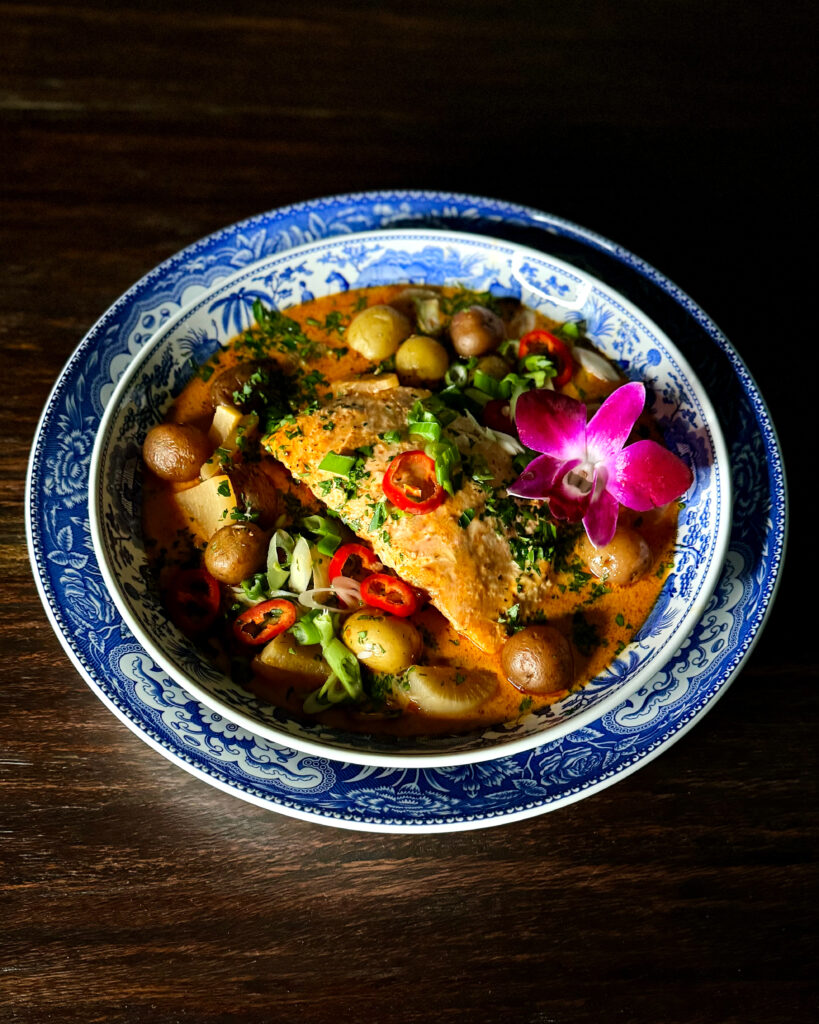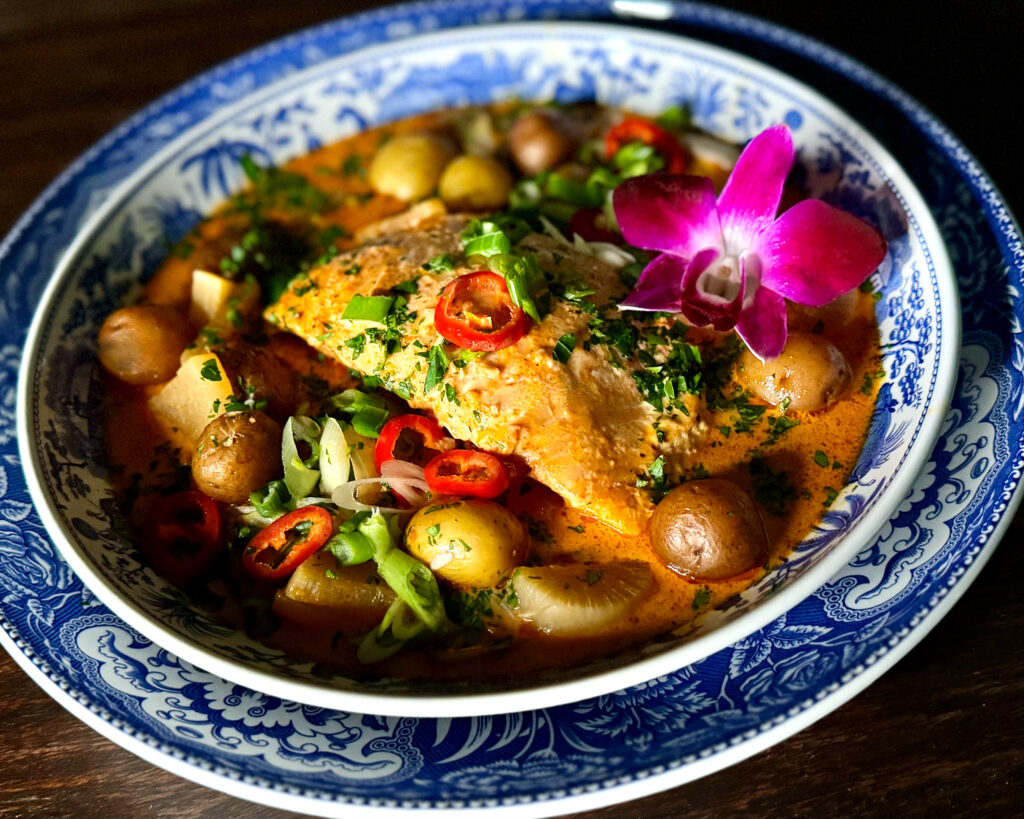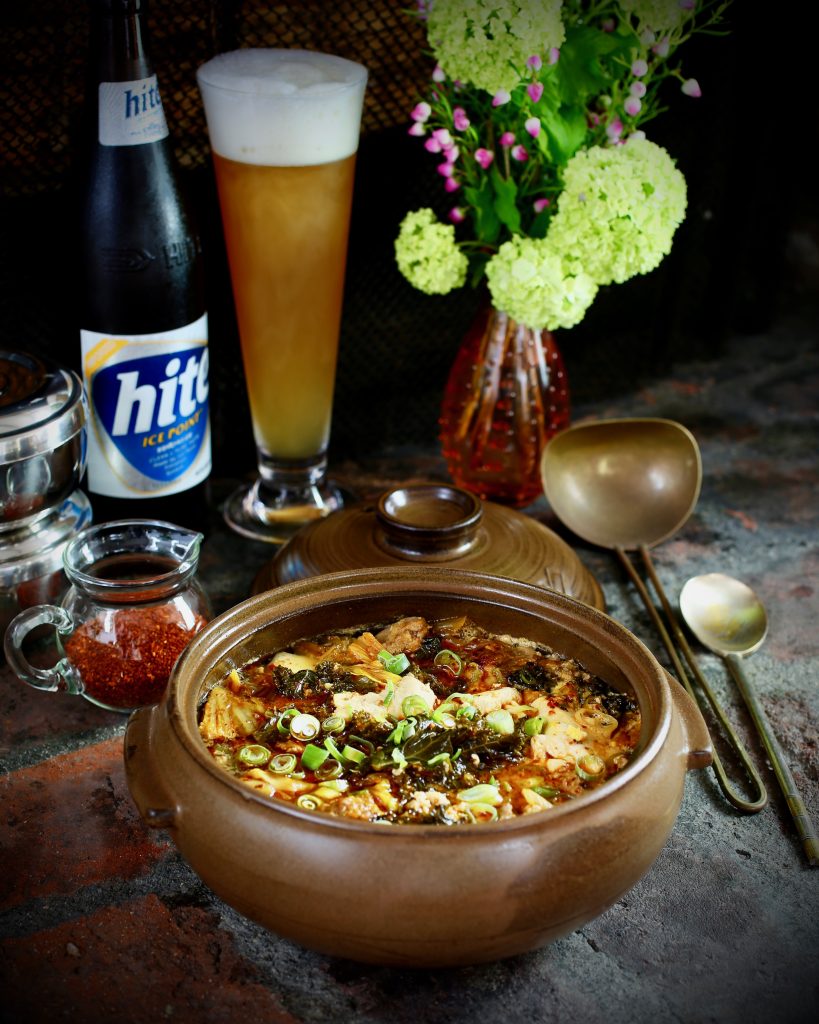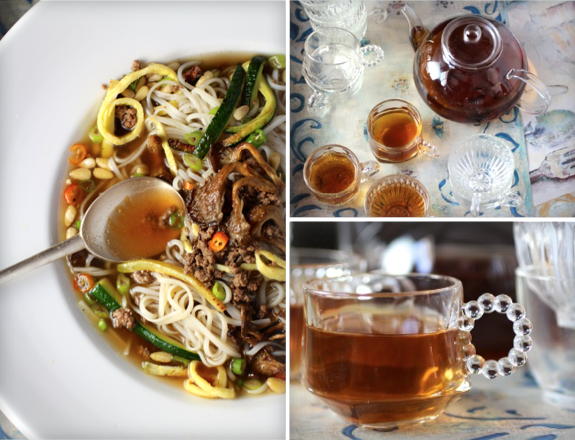
Creamy Gochujang Braised Salmon
The inspiration for this delicious dish comes from maeuntang, a spicy Korean fish stew.
Maeuntang is a flavorful and spicy stew that typically features a variety of seafood, tofu, vegetables. The broth is always seasoned with Korean red pepper flakes (gochugaru) and often red pepper paste (gochujang) plus other aromatic ingredients like garlic and ginger. It’s usually served with a side of rice.
This braised salmon dish takes on a creamy twist, blending Korean with French influences by incorporating unconventional elements such as butter, white wine, and heavy cream. Rather than serving it with rice on the side, the stew embraces a unique touch for the starch – mini potatoes braised directly within the broth.
Gochujang is a Korean red chili paste with sweet heat and a fermented umami richness. It is definitely spicy – but also has a balanced fruitiness, slight smokiness and depth of flavor from the sun-dried Korean red peppers.
It’s a heavenly pairing, marrying the freshness of the sea with the richness of a fiery, creamy broth. Each spoonful delivers a perfect balance of heat and richness. Potatoes and radish contribute not only to the stew’s visual appeal but also to its complexity of flavor. A sprinkling of parsley, scallion, and red chiles add fresh, colorful notes.
For a striking garnish, add a purple dendrobium orchid which is durable and has the ability to withstand varying temperatures without wilting, making it suitable for hot dishes. And while the orchid is considered safe for culinary purposes, here it is used for visual appeal rather than taste.







